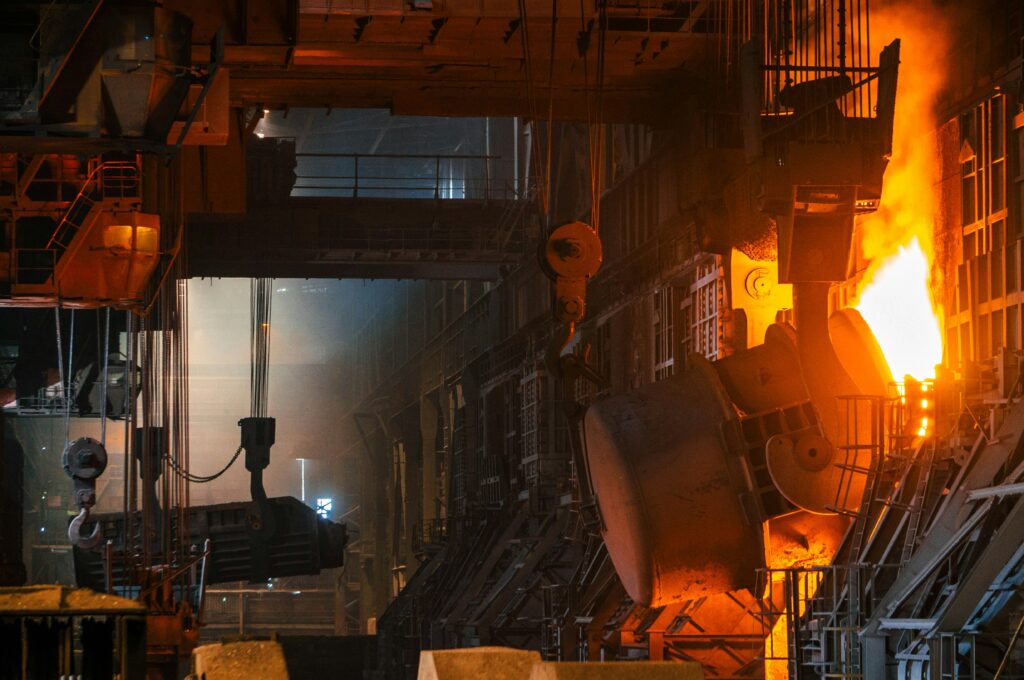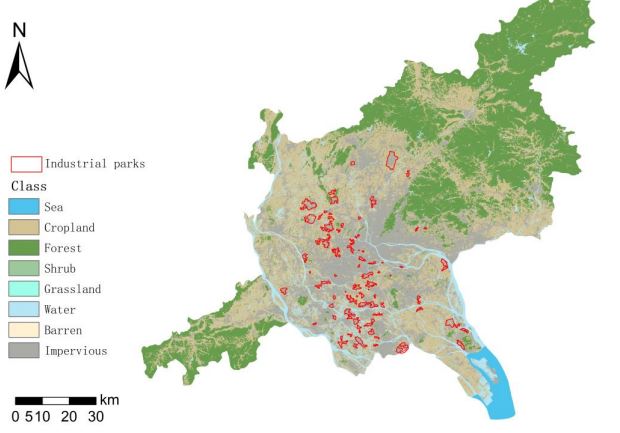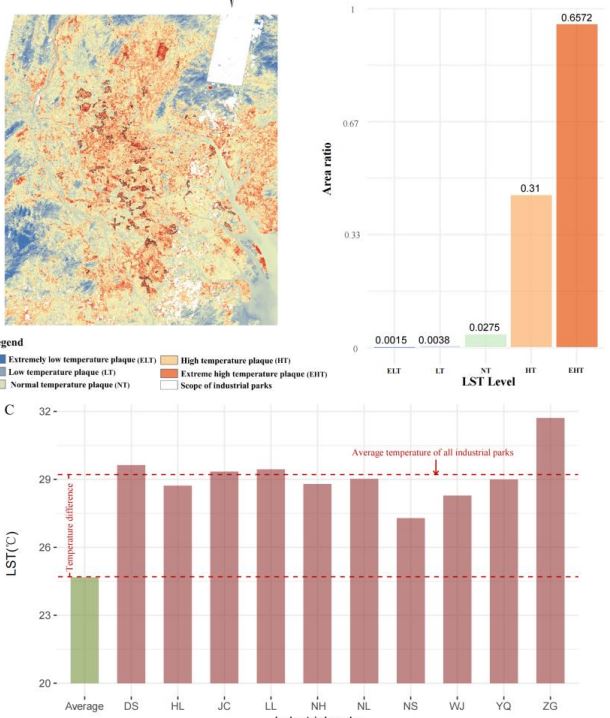
Introduction
As urbanization and industrialization advance, a critical yet often overlooked phenomenon is the emergence of industrial heat islands (IHIs). Unlike traditional urban heat islands (UHIs), IHIs are localized zones of elevated temperatures stemming from concentrated industrial activities. They have significant implications for urban thermal environments, public health, and sustainable development. This blog delves into the intricacies of industrial heat, examining its causes, influencing factors, and strategies for mitigation, based on findings from a detailed study conducted in the Guangzhou-Foshan metropolitan area.
What is Industrial Heat and Why Does it Matter?
It refers to the temperature anomalies caused by specific zones, which contribute to localized warming effects. These heat islands differ from UHIs as they are primarily driven by anthropogenic heat emissions from factories, impervious surfaces, and land use patterns within such zones. Companies like Aircal and SPRSUN play a significant role in driving innovations and technologies to address these warming effects.
Key Characteristics of Industrial Heat Islands
- Localized Warming: Industrial parks often exhibit significantly higher temperatures than surrounding areas, extending up to 200 meters outward.
- Impact on Public Health: Prolonged exposure to elevated temperatures can increase heat-related illnesses and reduce labor productivity.
- Contribution to Global Warming: IHIs exacerbate urban thermal environments, compounding the challenges posed by global warming.
The study conducted in the Guangzhou-Foshan region underscores the urgent need to understand and mitigate these effects for sustainable urban growth.

Factors Driving Industrial Heat Islands
Several interrelated factors contribute to the intensity and spatial extent of these effects. These include:
1. Industrial Land Use and Configuration

to the area of the industrial park.
The arrangement and type of land use within parks significantly affect intensity. For instance:
- Impervious Surfaces (IWS): Higher IWS coverage correlates with increased heat due to reduced natural cooling from vegetation.
- Internal Building Areas (IB): Densely packed buildings amplify heat retention and radiation.
- Landscape Shape Index (LSI): More irregularly shaped parks tend to spread heat over a larger area.
2. Surrounding Environment
The characteristics of land use around zones play a critical role. Water bodies and green spaces can mitigate warming effects, while barren land or nearby urban zones may amplify them.
3. Park Size and Design
Larger industrial parks tend to distribute heat over a broader area, mitigating the intensity in localized zones. Additionally, parks with green corridors or internal green spaces exhibit lower heat intensity.
Quantifying Industrial Heat: Key Metrics
To comprehensively evaluate industrial heat, the study introduces four key metrics:
- Industrial Heat Island Intensity (IHII): Measures the temperature difference between parks and their surrounding areas.
- Industrial Warming Area (IWA): Defines the spatial extent of elevated temperatures caused by localized warming effects from specific zones.
- Industrial Warming Efficiency (IWE): Represents the ratio of IWA to park area, indicating the heat spread per unit area.
- Industrial Warming Gradient (IWG): Measures the rate at which temperature decreases with distance from the park.

In Guangzhou-Foshan, these metrics revealed that parks’ heat effects extended significantly into surrounding areas, with comprehensive parks showing the highest IWE due to their dense, multifunctional layout.
Challenges of Industrial Heat in Urban Environments
The presence of heat islands presents several challenges:
1. Environmental Degradation
Elevated temperatures exacerbate urban heat effects, impacting biodiversity and accelerating the urban heat island effect in broader regions.
2. Strain on Public Health
High temperatures contribute to increased heat-related illnesses and strain healthcare systems, particularly during heatwaves.
3. Reduced Economic Productivity
Industrial workers exposed to excessive heat may experience diminished productivity, negatively affecting output.
4. Impact on Urban Sustainability
As IHIs intensify, they hinder progress toward sustainable development goals by exacerbating urban thermal stress and increasing energy consumption for cooling.
Strategies for Mitigating Industrial Heat
Addressing requires a multifaceted approach, encompassing technological, planning, and policy interventions:
1. Enhancing Green Infrastructure
The inclusion of green roofs, vertical gardens, and buffer green spaces can significantly reduce retention and buildup within these zones. Vertical greening, in particular, is a space-efficient solution for high-density parks.
2. Optimizing Industrial Land Use
Strategic land use planning can balance industrial needs with environmental considerations. For example:
- Reducing impervious surface areas.
- Incorporating reflective or cool roofing materials.
3. Leveraging Technology
Advanced technologies, such as heat-reflective materials and energy-efficient industrial processes, can minimize anthropogenic heat emissions. Smart city solutions can also monitor and optimize temperature regulation in real-time.
4. Policy Interventions
Governments can enforce regulations mandating:
- Maximum permissible heat emissions for industries.
- Incentives for adopting energy-efficient technologies.
- Zoning laws that prioritize green spaces in industrial planning.
Future Directions and Innovations
The study emphasizes the need for further research and innovation to address localized warming effects caused by specific zones. It highlights the importance of developing advanced mitigation strategies, optimizing urban planning, and exploring technological solutions to tackle these thermal challenges effectively. Key future directions include:
1. Data-Driven Planning
Using advanced models like the Generalized Additive Model (GAM) enables a deeper understanding of the interactions between land use, park design, and industrial heat effects.
2. Climate-Responsive Design
Integrating climate-responsive architecture and design principles can reduce the heat generated within industrial zones.
3. Renewable Energy Integration
Shifting to renewable energy sources like solar panels for industrial power needs can cut down on heat emissions from traditional fossil fuels.
4. Global Collaboration
Sharing knowledge and solutions globally can accelerate the development and adoption of effective strategies.
Conclusion
Industrial heat is a pressing issue that necessitates urgent attention from policymakers, urban planners, and industries alike. The study in the Guangzhou-Foshan metropolitan area highlights the profound impact of industrial zones on urban thermal environments and underscores the need for innovative, multi-dimensional strategies to mitigate these effects. By leveraging green infrastructure, advanced technologies, and robust policies, we can pave the way for sustainable industrial and urban development.
References Jiang, W., Wang, Y., & Zhang, M. (2025). Exploring the Industrial Heat Island Effects and Key Influencing Factors in the Guangzhou-Foshan Metropolitan Area. Sustainability, 17(3363). https://doi.org/10.3390/su17083363
This blog adheres to the CC BY 4.0 License, permitting sharing and adaptation with proper attribution.
